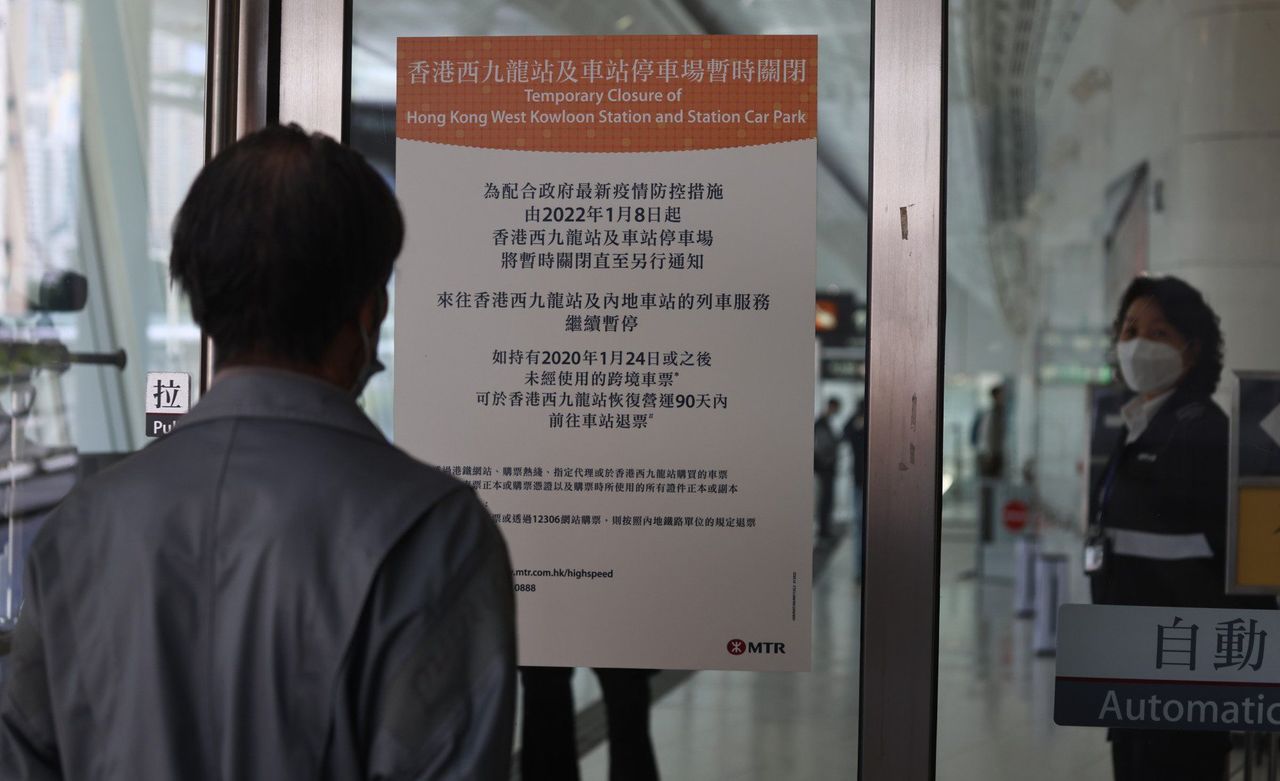Hong Kong News
Nonpartisan, Noncommercial, unconstrained.
Monday, Nov 17, 2025
Real, Diverse, Unbiased.

Price cuts signalled for Hong Kong express cross-border services
Tickets for cross-border high-speed trains to be sold at up to HK$33 less than when service started in 2018.
Hong Kong’s cross-border high-speed train tickets will be sold up to HK$33 (US$4.22) cheaper than when the line was opened in 2018 as the city prepares for the resumption of quarantine-free travel with mainland China.
Services are expected to resume in three phases starting with short-haul trips to destinations in Guangdong province, the Post has learned.
The latest update on the high-speed railway website said second-class seats on trains operated by the MTR Corporation from Hong Kong to Shenzhen North were priced at HK$84 and to Guangzhou South at HK$240 – HK$2 to HK$7 cheaper than when the service started.
The adult fare for a second-class seat on long-haul services to Beijing West is HK$1,204, HK$33 cheaper than the previous fare.
 The MTR prepares to reopen its cross-border rail links to mainland China.
The MTR prepares to reopen its cross-border rail links to mainland China.
“Fares for high-speed railway are set in yuan with the Hong Kong dollar fare being adjusted monthly subject to the prevailing exchange rate. Adjusted Hong Kong dollar fares will be announced on the first day of every month,” Zhang said.
Passengers could also travel to the mainland on the MTR’s high-speed railway links from West Kowloon station or on trains via the East Rail line from Lo Wu and Lok Ma Chau stations before the coronavirus pandemic struck the city.
But the checkpoints were closed in February 2020 as part of the government’s anti-epidemic measures.
Lawmaker Michael Tien Puk-sun, a former chairman of the Kowloon-Canton Railway Corporation, on Monday said the high-speed railway tickets would probably be available for purchase from Thursday at the earliest if the train service resumed on January 8.
He added that he understood from his sources authorities would reopen the high-speed railway in three stages to connect to several stations on the mainland.
Tien said the first stage would start with short-haul trips to Guangdong destinations including Shenzhen North and Guangzhou South, then medium-distance journeys like to Wuhan and Changsa would be resumed and then long-haul services to Shanghai and Beijing.
“The manpower arranged to those border stations by the MTR should be able to handle the traffic,” Tien said. “There were 300,000 to 500,000 people passing through the border everyday before the pandemic,” Tien said
“I believe the trains will not be in full operation through all three checkpoints at the beginning of the border reopening. If the authorities set the quota of travellers from 30,000 to 50,000, it shouldn’t be a big problem for train and station operations.”
The government earlier said it aimed to reopen the border with the mainland on January 8 and would set a quota on the number of travellers commuting between the city and the mainland in the initial stage and increase capacity in line with demand.
But Lam Wai-keung, the Hong Kong Federation of Railway Trade Unions chairman, said he was concerned about personnel shortages at other stations after rail staff returned to checkpoint stations.
“They are back for preparation, including checking the ticketing system and turnstiles, as well as having drills on operations and emergencies as they haven’t been doing those for a while,” Lam said.
“It will increase the pressure on the other stations after all staffers are transferred back to the border in case of emergency. The manpower of those stations may not be able to handle emergencies immediately.”
Zhang agreed staffing levels were a potential problem and highlighted that the present number of rail personnel was only 80 per cent of the figure before the coronavirus epidemic.
A spokesman for the MTR Corp said its team was working hard on the border reopening, including inspecting facilities, arranging the return of employees to their original posts for training and other preparations to ensure there were enough employees available to cover travel resumption arrangements.











